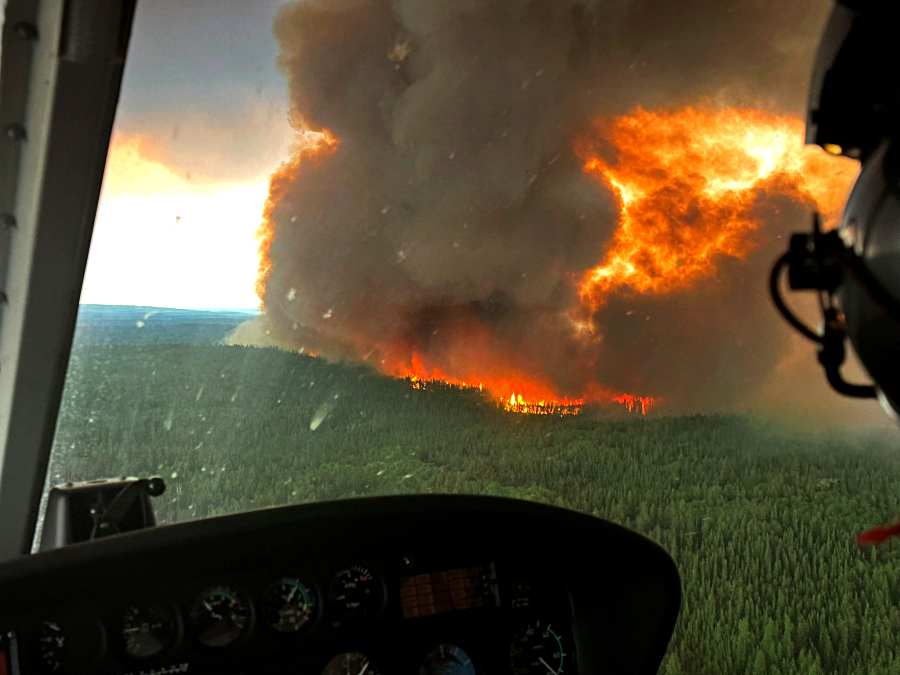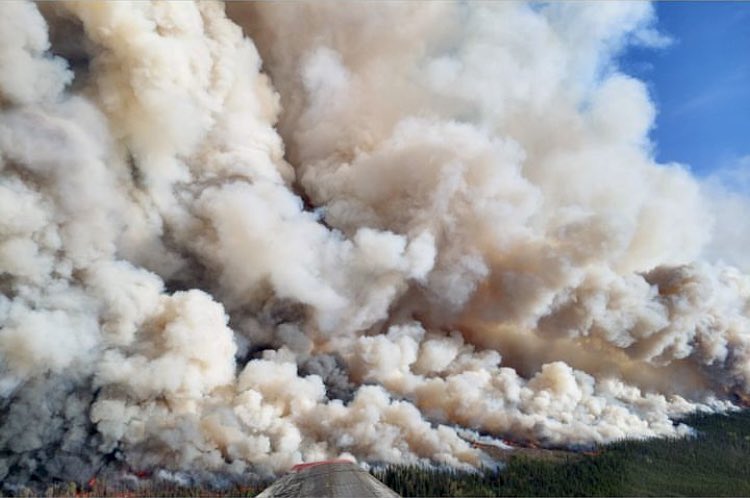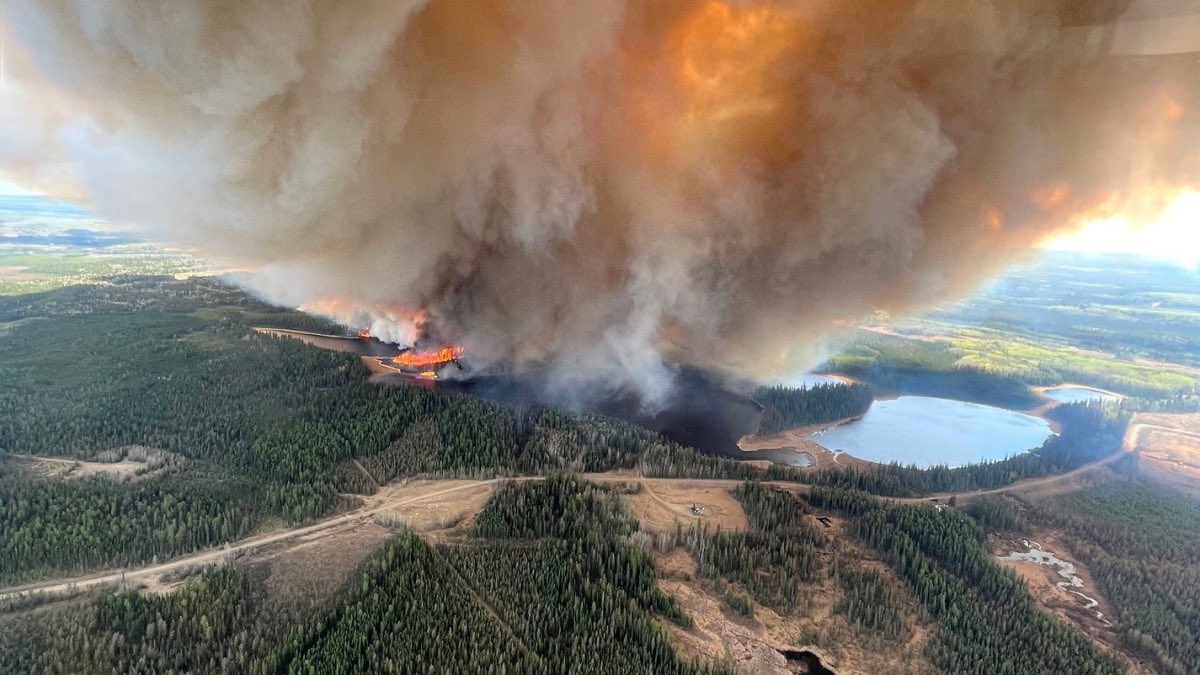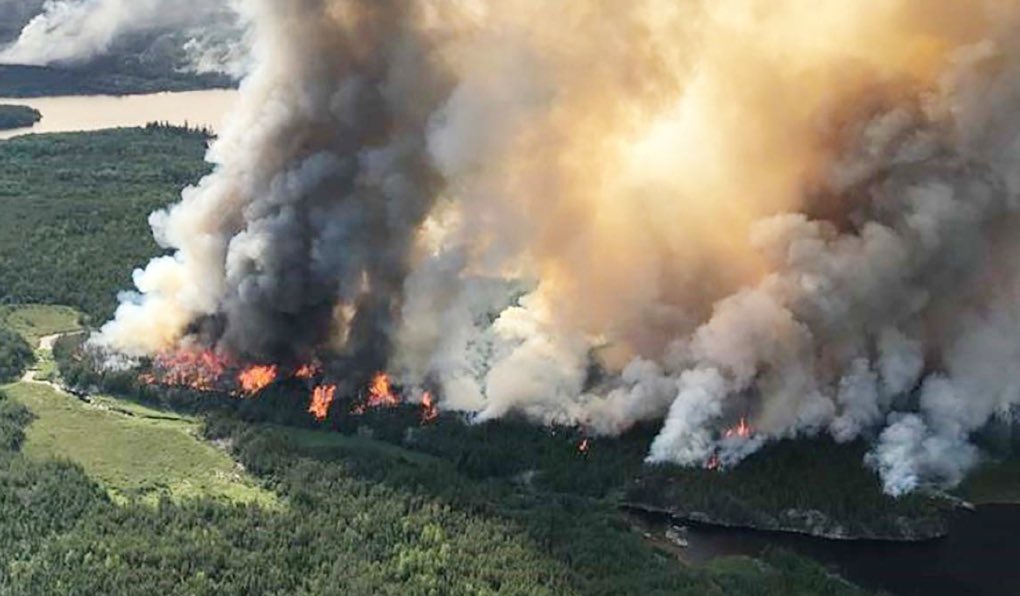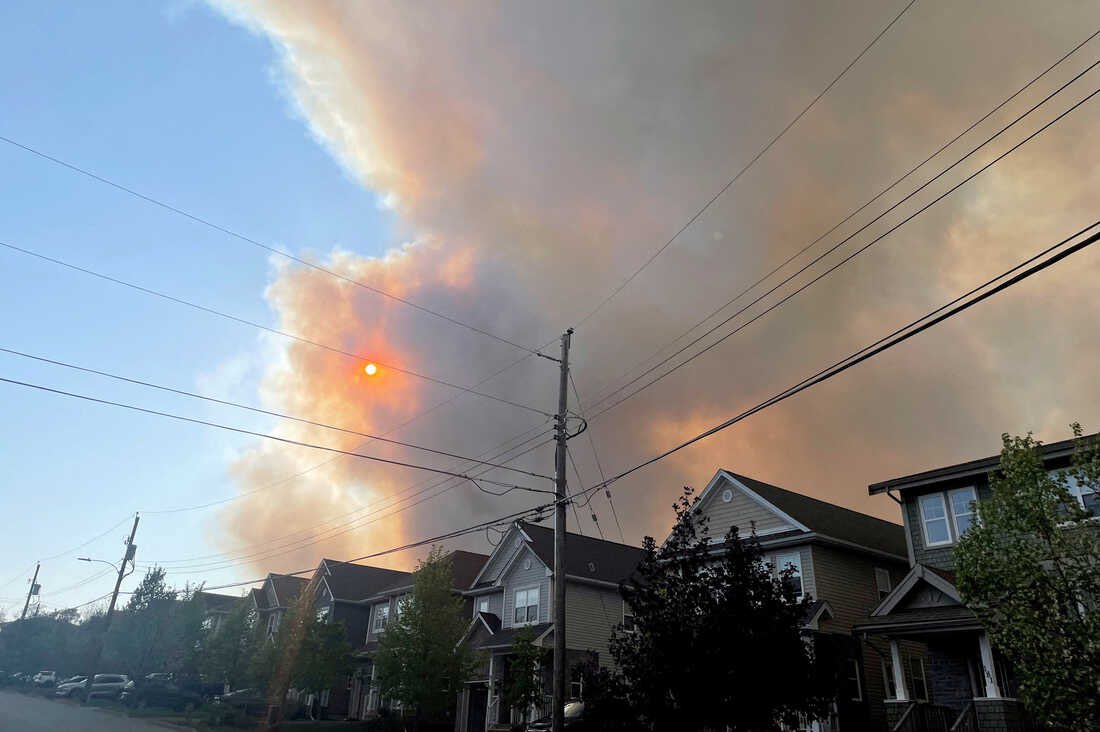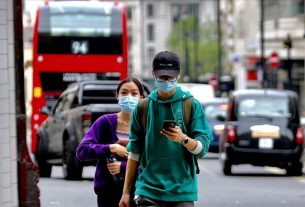Fri 09 June 2023:
Images of orange, hazy skies across Canada and parts of US fuel calls to tackle climate crisis making wildfires worse.
Montreal, Canada – “Do you smell smoke?” That’s the question people in Canada have been asking each other this week as hundreds of wildfires are burning in what has been described as an “unprecedented” start to the 2023 Canadian fire season.
Tens of thousands of people in communities across the country have been forced to evacuate as firefighters battle to contain the blazes that have scorched more than 3.8 million hectares (9.4 million acres) so far.
But the emergence of smoke-filled, discoloured skies in parts of Canada that typically aren’t affected by wildfires has spurred widespread public concern and calls for authorities to better prepare for a problem that experts say is only going to get worse.
“There’s this eerie sight of very smoky skies. It puts a yellow, greyish filter over the sun and the sky. There’s also a smell of wood-fire burning,” Caroline Brouillette, executive director of Climate Action Network Canada, said in an interview on Wednesday from Ottawa, the Canadian capital.
“It does really bring home that the climate crisis is happening here and now,” Brouillette told Al Jazeera.
Long-term health effects
Images shared on social media this week showed orange-tinged skies over Ottawa, Montreal and Toronto, where a thick haze obstructed views of the CN Tower and the downtown skyline of Canada’s largest city.
Air pollution advisories have been issued in places across Canada as well as in states in the US Northeast and Midwest, fuelling questions about the wildfires’ effects on the health of millions of people in North America.
“This is an unprecedented event in our city, and New Yorkers must take precautions,” said Adams, who urged residents to stay inside, close their windows and limit outdoor activity.
“While this may be the first time we’ve experienced something like this on this magnitude, let’s be clear: It is not the last. Climate change [has] accelerated these conditions. We must continue to draw down emissions, improve air quality and build resiliency.”
Jill Baumgartner, an associate professor in the School of Population and Global Health at McGill University in Montreal, said pollution levels in the city and in Canada more generally have been three to four times higher than usual as a result of the wildfires.
“The biggest health threat from wildfire smoke are from these very small, microscopic particles that you breathe in,” Baumgartner said, explaining that they can lead to a variety of problems from burning eyes and runny noses to chronic heart and lung diseases.
Hundreds of fires burning
The Canadian government said on Wednesday that more than 400 wildfires were burning across the country, including 239 that were considered out of control. More than 20,000 people remained displaced as a result of the blazes.
As of Wednesday morning, nearly 160 wildfires were burning in the province of Quebec alone, where thousands of residents have been ordered to leave their homes in the western Abitibi-Temiscamingue region.
But the fires have hit many places across Canada since May – from Nova Scotia and New Brunswick on the east coast to Alberta, British Columbia and the Northwest Territories in the west.
“We haven’t seen a season like this in our modern-day record,” said Mike Flannigan, research chair for predictive services, emergency management and fire science at Thompson Rivers University in British Columbia.
A warmer atmosphere also dries out fire fuels, such as the vegetation on forest floors. These drier fuels then make it easier for fires to start and spread, and they lead to higher intensity fires that “are difficult to impossible to extinguish”, Flannigan said.
“This is our new reality,” he told Al Jazeera. “We’re on a downward trajectory. Things are going to get worse and worse and worse.”
‘Wake-up call’
As the fires continue to burn, Canada has deployed the military in several areas and sought assistance from other nations.
The federal government also said this month that it is investing millions in wildfire prevention programmes and training, including in Indigenous communities that have been hit hard. Ottawa is also coordinating with local and provincial partners and plans to launch a satellite system to monitor fires, smoke and air quality, the government said.
“We’re in the worst year that we’ve ever had, and our resources are stretched thin, but we will continue to be there as much as possible,” Prime Minister Justin Trudeau said in French during a news conference on Wednesday afternoon.
He acknowledged that Canada should expect more frequent “extreme” weather events in the years to come and said the country needs to give itself the ability to respond to minimise the impact of these emergencies.
“And that is by continuing our fight against climate change, continuing to lower our emissions, continuing to transform our economy so as to create good jobs and protect future generations,” he said.
Flannigan said Canada needs to take a more proactive approach to wildfires going forward, including imposing fire bans and closing forests to recreational users and industry “before the fire episode is upon you”.
Authorities also should better prepare to deploy extra fire crews and resources in advance. “Fire is a multifaceted issue that needs a multipronged approach,” he said. “There’s no silver bullet or vaccine that’s going to make this thing go away. We really do have to learn to live with fire.”
Meanwhile, environmental advocates are calling on Canada to do more to address the problem fuelling the recent scenes of wildfire devastation: climate change. The country, home to the Alberta tar sands, was the fourth-largest oil producer in the world in 2020, and activists say it cannot be a climate leader while also continuing to develop oil and gas projects.
“Fossil fuels are the primary cause of the global climate crisis, and our dependency on them is clearly exacerbating extreme weather events in general, and particularly in this season, the frequency and severity of wildfires,” Sane told Al Jazeera.
“We really need to tackle the root cause, which is fossil-fuel exploitation.”
______________________________________________________________
FOLLOW INDEPENDENT PRESS:
TWITTER (CLICK HERE)
https://twitter.com/IpIndependent
FACEBOOK (CLICK HERE)
https://web.facebook.com/ipindependent
Think your friends would be interested? Share this story!


